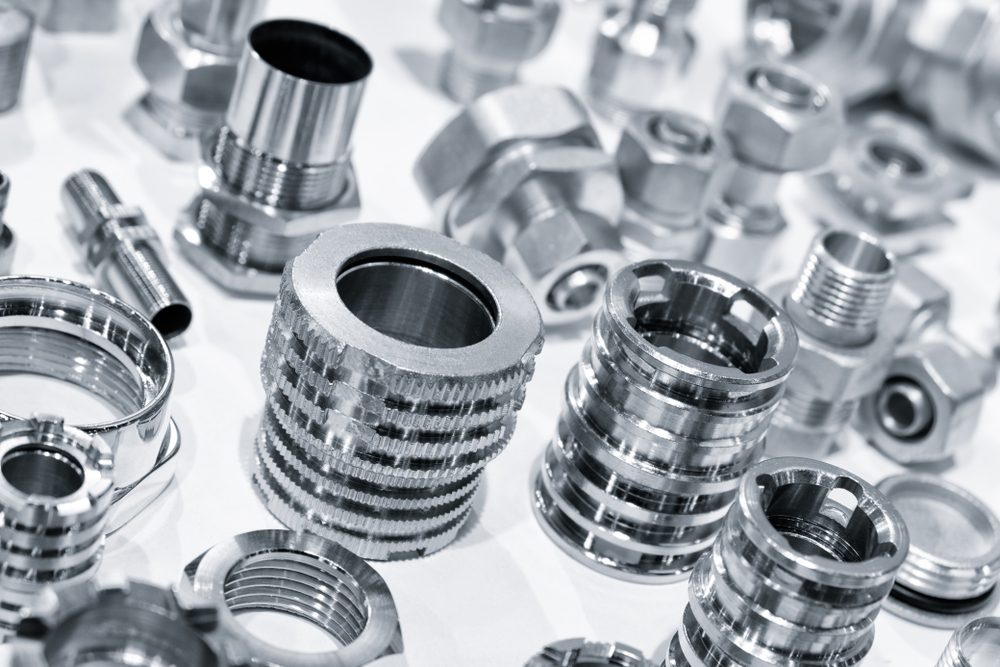Introduction to CNC Machining Parts
CNC (Computer Numerical Control) machining parts play a crucial role in modern manufacturing industries. These components are used in various sectors, including automotive, aerospace, medical, and construction, ensuring precision, consistency, and efficiency in production. CNC machining allows for automated, high-precision cutting, drilling, milling, and turning processes.
Send Enquiry...
How CNC Machining Parts Work
CNC machining operates by using pre-programmed software to control machinery and tools. The computer-aided design (CAD) is converted into a CNC program that dictates the movement and operation of the machine. The programmed instructions enable precise cutting, shaping, and drilling of materials like metal, plastic, and wood, ensuring high accuracy and repeatability.
Essential Parts of a CNC Machine
CNC machines are composed of various critical components, each serving a specific function. These include:
- Control Panel: The interface where operators input commands and monitor operations.
- Spindle: A rotating component responsible for cutting and drilling materials.
- Tool Holders and Cutting Tools: Used to shape materials with extreme precision.
- Linear Guides and Bearings: Ensuring smooth and accurate movement of machine parts.
- Table or Workpiece Holder: Holds the material securely during machining.
- Coolant System: Helps to prevent overheating and extends the tool’s lifespan.
Advantages of CNC Machining Parts
CNC machining parts offer multiple benefits, making them essential in modern manufacturing. Key advantages include:
- High Precision: Delivers accurate and consistent results with minimal errors.
- Increased Efficiency: Automation speeds up production and reduces manual labor costs.
- Versatility: Can handle various materials such as metals, plastics, and composites.
- Scalability: Suitable for both small-scale prototypes and large-scale manufacturing.
- Enhanced Safety: Reduces workplace accidents by minimizing direct human involvement.
Controlling CNC-Controlled Machine Parts
CNC machines are controlled through various programming languages, such as G-code and M-code. The control system processes these codes to dictate the movement, speed, and function of each machine part. Operators use CAD/CAM software to design components, which are then translated into machine-readable instructions. Advanced CNC systems also incorporate sensors and automation features for real-time monitoring and adjustments.
Verdict
CNC machining parts are a game-changer in the manufacturing industry. Their ability to enhance precision, productivity, and efficiency makes them indispensable in various industrial applications. Whether for prototyping or mass production, CNC machines provide unmatched accuracy, making them a valuable investment for businesses.
Frequently Asked Questions (FAQ)
Q1: What materials can be used in CNC machining?
A: CNC machines can process metals (aluminum, steel, brass), plastics, wood, ceramics, and composites.
Q2: How does CNC machining differ from manual machining?
A: CNC machining is automated and provides higher precision, efficiency, and repeatability compared to manual machining.
Q3: Can CNC machines produce complex designs?
A: Yes, CNC machining can produce intricate and highly detailed components with extreme accuracy.
Q4: Is CNC machining expensive?
A: Initial costs may be high, but the efficiency, reduced waste, and long-term savings make it a cost-effective solution.
Q5: What industries benefit from CNC machining?
A: CNC machining is widely used in aerospace, automotive, medical, electronics, and industrial manufacturing sectors.
